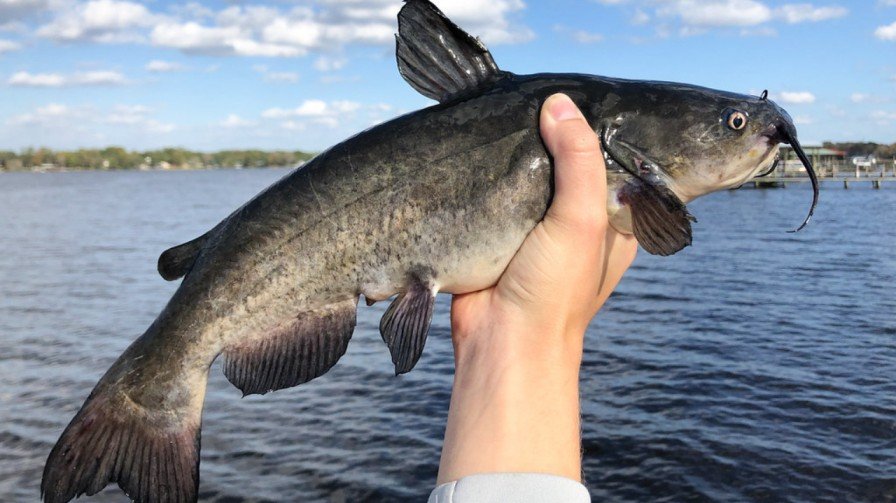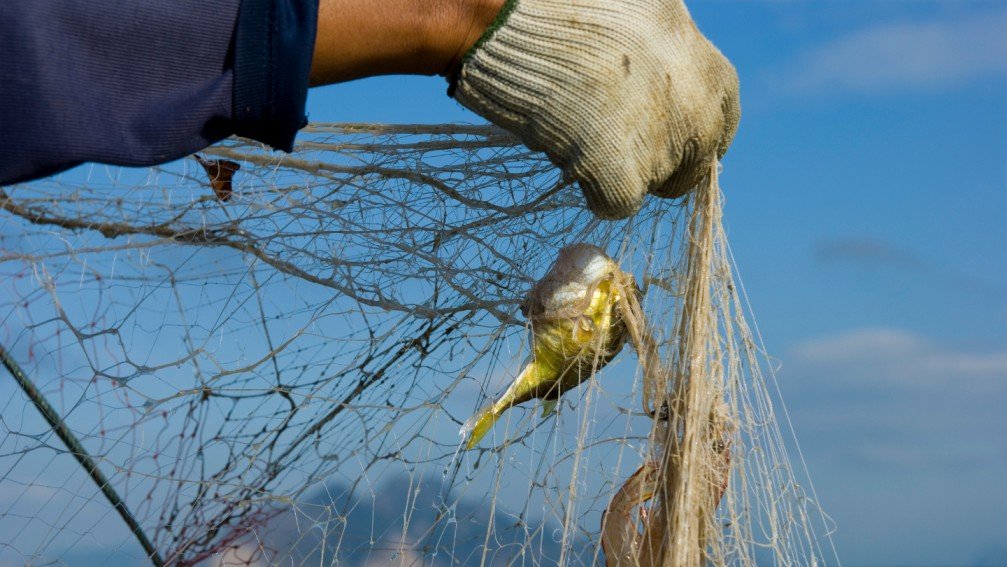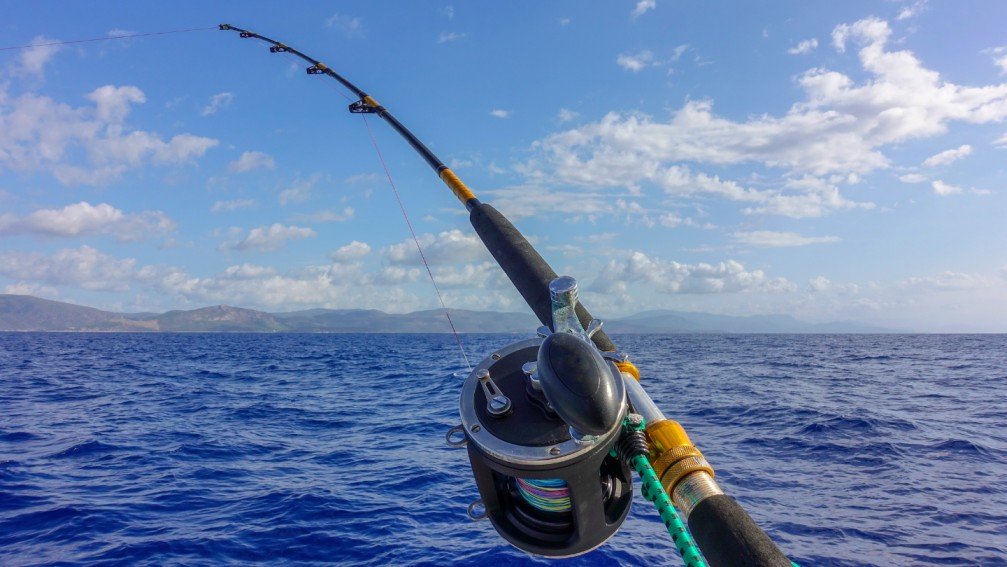To catch catfish, use strong fishing gear and bait such as worms, chicken liver, or stink bait. Fish in areas with deep, slow-moving water.
Catfish are popular targets for anglers due to their size and fight. These bottom-dwelling fish thrive in various water bodies, including rivers, lakes, and ponds. Catfish are known for their keen sense of smell, which makes bait selection crucial. Using the right bait will increase your chances of a successful catch.
Nighttime or early morning fishing can be particularly effective, as catfish are more active during these times. Patience and persistence are key, as catfish can be elusive. With the correct approach, catching catfish can be a rewarding experience for both novice and experienced fishermen.
Choosing The Right Gear
Having the right gear is crucial to catch catfish. Using the correct equipment makes the fishing experience enjoyable and successful. Let’s explore the best rods, reels, and fishing lines.
Rods And Reels
The right rod and reel are essential for catfish fishing. Catfish rods should be strong and durable. Look for rods made of fiberglass or composite materials. These rods handle the weight of big catfish well.
For reels, choose a baitcasting reel or a spinning reel. Baitcasting reels offer better control and accuracy. Spinning reels are easier to use for beginners. Both types work great for catfish fishing.
Fishing Line Selection
Choosing the right fishing line is important. Monofilament lines are popular for catfish fishing. They are strong and flexible, ideal for big fish. Braided lines are also a good option. They have high strength and low stretch. This helps in feeling the bites and setting the hook.
Consider the line strength or pound test. For small catfish, a 10-20 pound test line works well. For larger catfish, use a 30-50 pound test line. This ensures you can handle their weight and fight.
Best Baits For Catfish
Understanding the best baits for catfish can boost your catch success. Catfish are known for their strong sense of smell and taste. This makes the right bait crucial. Let’s explore the top baits for catching catfish.
Natural Baits
Natural baits are often the most effective for catfish. They mimic the food catfish find in their habitat.
- Worms: Nightcrawlers are a favorite among catfish. They wiggle and catch the catfish’s attention.
- Shad: Cut shad pieces release a strong scent in the water. This attracts catfish quickly.
- Chicken Liver: The strong smell of chicken liver lures catfish. It’s an affordable and effective option.
- Crawfish: Crawfish are a natural prey for catfish. Use them live or as cut bait.
Artificial Baits
Artificial baits can also be very effective for catching catfish. They are designed to mimic natural prey and attract fish.
- Dip Baits: These are soft and sticky. Dip your hook into it and the scent attracts catfish.
- Scented Plastics: These are plastic baits with added scents. They mimic the smell of natural baits.
- Spinners: Spinners create vibrations and flash in the water. This draws catfish from a distance.
Choosing the right bait can make your catfishing trip successful. Whether you use natural or artificial baits, the key is to match the bait to the catfish’s diet.
Ideal Fishing Spots
Finding the perfect spot is crucial for catching catfish. You need to know where catfish thrive to increase your chances. Below are some of the best places to fish for catfish.
Rivers And Streams
Catfish love rivers and streams. These moving waters provide plenty of food. Look for deeper areas with slow-moving currents. Catfish also like hiding under rocks and logs. Focus on these spots for better success.
Popular Rivers for catfishing:
- Mississippi River
- Missouri River
- Ohio River
Early morning or late evening is best for river fishing. Catfish are more active then.
Lakes And Ponds
Catfish also thrive in lakes and ponds. These waters offer calm and deep environments. Look near the bottom of the lake or pond. Catfish often hide near structures or vegetation.
Popular Lakes for catfishing:
- Lake Texoma
- Lake Fork
- Santee Cooper Lakes
Nighttime is often the best time to fish in lakes. Catfish become more active after sunset.
Tips for finding the best spots:
- Use a fish finder for deeper waters.
- Look for muddy bottoms.
- Check local fishing reports.
Credit: fishingbooker.com
Understanding Catfish Behavior
Understanding catfish behavior is crucial for a successful catch. Knowing how these fish act can make your fishing trip more fruitful.
Feeding Habits
Catfish are opportunistic feeders. They eat a variety of food, making them easier to catch. Their diet includes:
- Small fish
- Insects
- Crawfish
- Plant material
Catfish have a keen sense of smell. They often search for food using their whisker-like barbels. These barbels help them detect food in murky waters. Use bait that smells strong to attract them. Chicken liver, stink bait, and worms work well.
Seasonal Patterns
Catfish behavior changes with seasons. Knowing these patterns helps in planning your fishing trip.
| Season | Behavior |
| Spring | Catfish become more active. They move to shallow waters for spawning. |
| Summer | Catfish stay in deeper, cooler waters. Fish at dawn or dusk. |
| Fall | Catfish feed heavily to prepare for winter. They are more aggressive. |
| Winter | Catfish slow down. They stay in deep, warm waters. Use slow-moving bait. |
Understanding these patterns gives you an edge. Always adapt your strategy based on the season.
Effective Fishing Techniques
Mastering effective fishing techniques is key to catching catfish. Various methods can help, such as bottom fishing and float fishing. These techniques improve your chances of a successful catch. Let’s explore these methods in detail.
Bottom Fishing
Bottom fishing is a popular method for catching catfish. This technique involves placing bait on the bottom of the water. Catfish often stay near the bottom, making this method effective.
To start, use a heavy sinker to keep your bait on the bottom. Attach the sinker to the end of your line. Use a circle hook for better hook sets. Choose baits like worms, chicken liver, or stink bait.
Below is a simple setup for bottom fishing:
| Item | Description |
| Rod | Medium to heavy action |
| Reel | Baitcasting or spinning |
| Line | 20-50 lb test |
| Sinker | Heavy weight |
| Hook | Circle hook |
| Bait | Worms, chicken liver, stink bait |
Float Fishing
Float fishing is another effective method for catfish. This technique uses a float to keep bait suspended in the water. Adjust the float to the desired depth. This method works well in rivers and lakes.
Here is a basic float fishing setup:
- Rod: Light to medium action
- Reel: Spinning reel
- Line: 10-20 lb test
- Float: Bobber or slip float
- Hook: J-hook or treble hook
- Bait: Worms, minnows, or cut bait
Attach the float to your line at the desired depth. Add a small weight to keep the bait below the float. Cast your line and wait for a bite. The float will move or sink when a catfish bites.
Credit: www.frenchcarpandcats.com
Setting Up Your Rig
Setting up your rig is crucial for catching catfish. A well-prepared rig increases your chances of success. This section will guide you through the essential components.
Hook Types
Choosing the right hook is important. Different hooks suit different catfish.
- Circle Hooks: Great for a secure catch. They reduce gut hooking.
- J-Hooks: Traditional and versatile. Ideal for various bait types.
- Treble Hooks: Best for stink bait. They have multiple points.
Each hook type has its own advantages. Pick based on your fishing style.
Weight And Bobber Selection
Weights help sink your bait to the bottom. Catfish often stay near the bottom.
Types of Weights:
| Weight Type | Best Use |
| Egg Sinkers | Slow-moving water |
| Bank Sinkers | Strong currents |
| No-Roll Sinkers | Rivers and streams |
Bobbers keep your bait at the desired depth. They also signal bites.
Types of Bobbers:
- Fixed Bobbers: Easy to use. Great for shallow water.
- Slip Bobbers: Adjustable depth. Ideal for deeper water.
Choose weights and bobbers that match your fishing conditions.
With the right setup, your chances of catching catfish improve greatly.
Deep Sea Fishing Tips for Beginners: Master the Ocean
Handling And Releasing Catfish
Handling and releasing catfish properly is crucial. It ensures the fish’s safety and the angler’s well-being. This section provides essential tips for safe handling and proper release methods.
Safe Handling Tips
Catching a catfish is thrilling. Yet, handling them requires care. Catfish have sharp spines on their dorsal and pectoral fins. These spines can injure you if not handled properly.
- Wear gloves: Gloves protect your hands from spines and slime.
- Avoid the spines: Hold the catfish by its belly, behind the pectoral fins.
- Use a towel: Wrap a wet towel around the fish to get a better grip.
These tips help prevent injuries and ensure a firm grip on the fish.
Proper Release Methods
Releasing catfish correctly is important for their survival. Follow these steps to release them safely:
- Minimize air exposure: Keep the fish in the water as much as possible.
- Remove the hook gently: Use pliers to remove the hook carefully.
- Revive the fish: Hold the fish in the water, moving it back and forth.
This process helps the fish regain its strength before swimming away. Ensure the fish is active before releasing it.
Remember, proper handling and release techniques protect catfish populations. It also ensures sustainable fishing for future generations.
Common Mistakes To Avoid
Fishing for catfish can be exciting and rewarding. Yet, many anglers make common mistakes that hinder their success. Understanding these mistakes can help you catch more catfish.
Improper Baiting
Improper baiting is a frequent mistake. Many fishermen use the wrong bait. Catfish prefer specific baits. Use live bait like worms, minnows, or shad. Stinky baits also attract them. Examples include chicken liver and stink bait.
Using the wrong bait results in fewer catches. Always choose bait that appeals to catfish. Fresh bait works best. Old or stale bait is less effective. Keep your bait fresh and appealing.
Wrong Timing
Many anglers fish at the wrong time. Catfish are more active at night. They also bite more during dawn and dusk. Fishing in the heat of the day is less productive.
Check the weather before going out. Overcast days are better for catfish. Avoid bright, sunny days. Catfish seek cooler, shaded areas.
Here’s a simple table to remember the best times:
| Time of Day | Activity Level |
| Night | High |
| Dawn | High |
| Dusk | High |
| Midday | Low |
Credit: www.themeateater.com
Mastering the art of catching catfish requires patience and the right techniques. Use the tips shared to improve your skills. Remember, the right bait and location are crucial. Happy fishing, and may your catches be plentiful! For more tips and tricks, stay tuned to our blog.
FAQs:
What Is The Best Bait For Catfish?
The best bait for catfish includes chicken liver, nightcrawlers, and stink baits. Live bait like minnows also works well.
How To Catch Catfish For Beginners?
Use a sturdy rod and reel. Bait with worms or stink bait. Fish in lakes or rivers. Cast near structures. Be patient.
What Time Of Day Do Catfish Bite The Most?
Catfish bite most during early morning and late evening. They are also active at night, especially in warm weather.
What Is The Best Rig For Catfishing?
The best rig for catfishing is the slip sinker rig. It allows the bait to move naturally, attracting more catfish. Use a 2/0 to 5/0 circle hook for best results. A sturdy rod and reel with 20-30 lb test line complete the setup.



